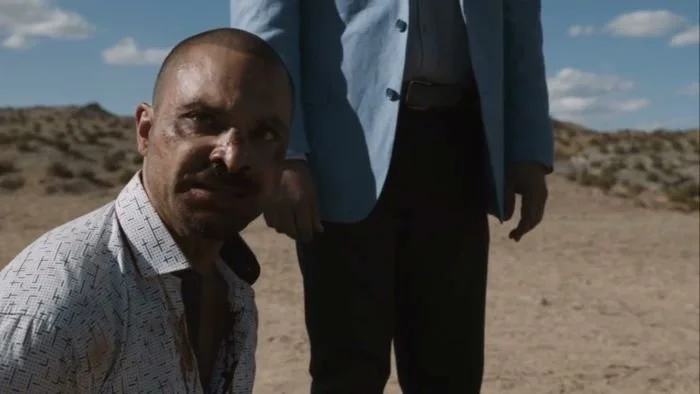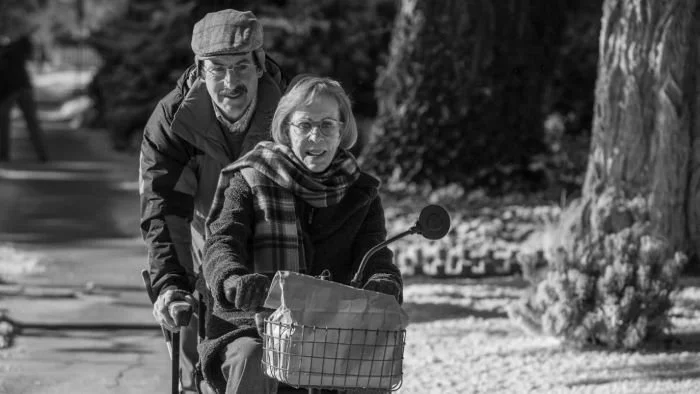Saul's Well That Ends Well 'Better Call Saul' Final Season Review
Image Source: TV Insider
Warning! This Article Contains Spoilers For Better Call Saul Season 6!
When Better Call Saul first premiered on AMC, many wondered how the goofy lawyer could add to the mythos more than characters like Gus and Mike when it came to filling in the blanks before Breaking Bad. As it turned out, he could add a lot. Over the course of six seasons, Better Call Saul was able to masterfully craft the sad rise and fall of a man who always tried to do best by the ones he loved, but was constantly drawn to the shadier side of life. Through the tales of Saul, Kim, Gus, and Mike, Better Call Saul told a story that was as good, if not better, than its predecessor, while capping off not only its own story but the events of Breaking Bad and El Camino.
The series may have started as a slow burn, but by Season 3, Better Call Saul was in full swing bringing forth the corruption of Jimmy McGill, his rise to Saul Goodman, and his fall to Gene Takovitch. Everything in the series perfectly built up to the moments of Season 6, where Jimmy fully embraces becoming Saul. When fans last left Saul and Kim, they were planning to ruin Howard Hamlin’s reputation and law practice. Their perfectly executed plans exemplified Saul and Kim’s ability to scheme and connive their way to the top. As they continued with their plans, Howard looked worse and more paranoid whenever he tried to pin the blame on Saul. Moments such as the scene in which it is revealed that Saul secretly planted the private detective Howard hired to follow him showed Saul’s expertise in covering his tracks. The whole ordeal reminded the audience just how dangerous Saul could be with knowledge of both law and crime while setting up for Kim’s demise/departure during the events of Breaking Bad.
RELATED:
As Saul and Kim’s mischievous and whimsical storyline kept viewers entertained, the cartel’s plot kept them on the edge of their seats. There were many theories as to why Nacho and Lalo were not a part of the events of Breaking Bad, with the answer being extremely blunt. Viewers watched and felt the paranoia as Nacho attempted to escape the clutches of the cartel after he left Lalo’s gate open, and Lalo was presumed to be dead following an attack on his home. Scenes of Nacho receiving the aid of Mike and Gus, only to realize that they were after him just as much as the other side, were disheartening. He started as a character with an in, trying to further himself, but fans learned that he was much like Jessie in the sense that he simply got mixed up in the wrong crowd. Fans would come to root for Nacho and hoped that he wouldn't reach an untimely end. When everything finally caught up with him, those hopes were shattered when he took a bullet to the head and died with the same secrets he fought so hard to get away from.
Image Source: NetTwenty
Lalo’s survival and journey to uncover Gus was exhilarating. No one, besides Walter, came so close to unraveling Gus Fring’s criminal organization. Watching him hide in the sewers and sneak around was a much different and, frankly, terrifying approach to his character as his actions became more erratic and unpredictable. No one knew what he may do next, which led to some shocking moments like his trip to Germany and his visit to Saul and Kim. The moment the candle flickered, fans knew something was wrong. The tension was already high as Howard stood there berating Kim and Saul for their actions. The look of shock and horror they saw Lalo entering behind Howard was “edge-of-the-seat” television. Whenever the plot threads of cartel and law crossed paths, people knew they were in for something huge. Many had theorized that it would be Kim who snapped and killed Howard. Few expected Lalo to enter the scene and shoot Howard for simply being in the way.
The midseason finale ended at this point and seemed to have delivered at first. However, the pacing of the second half of Season 6 would feel off because of it. The latter half of the season embraced the plot lines people had tuned into since the beginning while mixing it with what was shown in Breaking Bad. Lalo’s kidnapping and mental torture of Saul and Kim and his ultimate demise at the hands of Gus were a perfect cap to his story. From this point on, the timeline shifted, and viewers finally witnessed Saul’s evolution from the mild-mannered Gene in the future and filled in the blanks of his story during the events of Better Call Saul.
This change in Saul was monumental. Viewers were always given a small snippet of what Gene was up to during the first episode of each season. When the final season began, we saw Saul’s home being cleaned out after he asked for his identity to be wiped. The full episode of Gene plotting Saul’s return should have been the jumping-off point for the mid-season, yet fans were left to trudge through the end of Saul and into Gene. This did not mean that what ended up being shown was not entertaining. It just did not seem like the right way to lead to the final plot points if we were to look at it from the storytelling standpoint. Alas, Gene took center stage once he began to scheme again. No longer were the cartel side plots relevant, as everything people needed to know beyond this series had already been covered in Breaking Bad. Those snippets felt like a man trying to escape his past rather than embrace it.
The Gene-centered episodes often featured flashbacks from Breaking Bad, filling in moments that did not need to be filled in. While it was nice to see Bryan Cranston and Aaron Paul back as Walt and Jessie, the scenes felt forced or unwarranted. By this point of the series, Better Call Saul had already created a name of its own and did not need to rely on the cameos of Breaking Bad’s main characters. Yet, it would have been criminal not to include them in some form. The two moments that fit the best with the plot were when Kim brought the divorce papers to Saul and when Walter and Saul talked while waiting for their new identities. Otherwise, these flashback scenes simply detracted from Gene’s antics.
Initially, it looked as though Gene was slipping right back into his old ways with ease. The scheme he crafted to sneak into the life of the man who recognized him was perfectly executed. Carol Burnett gave a standout performance as Marion. It was heartbreaking to see Gene take advantage of this woman’s heart as she truly believed that he was a good man that could steer her son in the right direction. It was all downhill from the moment she saw Gene’s true colors. The second half of the season perfectly showed him not being as careful as he once was and struggling at times to snap right back into his criminal ways, always messing up on one aspect or another of his plans. It was only a matter of time before his actions caught up with him. When he finally did get caught in the final episode, it was a heart-racing chase that ended with a crushing defeat.
Source: Cine Dope
The series finale was a master class in filmmaking. The series had shown Jimmy becoming Saul, and Saul becoming Gene. Then, we saw that transition played out in reverse. Bob Odenkirk’s portrayal of the character was amazing when he snapped into Saul as he spoke with the prosecutors. He was so matter-of-fact and sly in his performance as Saul talked his way out of a life sentence down to seven years. Just when it looked like he might get less time by offering information on Howard Hamlin’s murder, the prosecutors revealed that Kim already confessed everything the other day. When he learned that Kim may lose everything in a civil suit surrounding the case, Saul left, and Jimmy took over. Throughout the show, he always put his love for Kim above everything else. The look of shame and defeat on his face showed how his love for her never ceased.
In the final courtroom scene, it looked like Saul would get away scot-free, and there was no stopping him. That was until he saw Kim in the audience. That same defeated look from his meeting with the prosecutors returned. When Saul took the stand to explain his actions, he shifted from his practiced monologue and confessed to everything he had previously talked his way out of. Everyone in the crowd and the audience at home were understandably shocked. For the first time in a long time, Jimmy did the right thing. He was no longer playing a character. He was being true to his good heart, which he had suppressed so many times throughout the show. He went to jail in order to save Kim.
Source: Slash Film
The stark difference between Better Call Saul and Breaking Bad was in the main characters. Walter was a bad person playing the part of a good man. On the other hand, Jimmy was a good person playing the part of a bad man. Better Call Saul depicted the sad decline of a man who consistently tried to make up for his bad past, but the universe kept steering him back into it. First, it was earning a law degree in an attempt to make his brother proud, only for his brother to continue to despise him. Then, he tried to make an honest life with Kim, only for her to become more scheming. He tried to walk away from the cartel, only to be pulled back in by a homicidal maniac. In the end, when it looked like he would escape the fate he made for himself and the repercussions of his crimes, like Walt in death or Jessie by running away, Jimmy did the right thing and turned himself in. It was a bittersweet ending to one of television’s finest series.
READ NEXT:






